 Yesterday, we posted about the Maersk Essen that recently lost 750 containers over the side in a storm in the North Pacific. An unknown number of containers still aboard the ship are believed to have been damaged during the storm. The ship was originally scheduled to dock in Los Angeles but has now been diverted to Port of Lázaro Cárdenas, where it is expected to spend some time alongside taking off damaged boxes on deck. The ship will also be surveyed for storm damage.
Yesterday, we posted about the Maersk Essen that recently lost 750 containers over the side in a storm in the North Pacific. An unknown number of containers still aboard the ship are believed to have been damaged during the storm. The ship was originally scheduled to dock in Los Angeles but has now been diverted to Port of Lázaro Cárdenas, where it is expected to spend some time alongside taking off damaged boxes on deck. The ship will also be surveyed for storm damage.
The ship was diverted due to extraordinary container port congestion in Southern California. The Port of Los Angeles, the busiest container port in the Western Hemisphere, is absolutely jammed with container ships. Recently, there were over 30 container ships at anchor in San Pedro Bay off Los Angeles and Long Beach waiting for berths. Container loading and discharge operations, designed for the fast turn-around of the ships in port, have slowed dramatically.
The ports have been doubly hit by the pandemic. Continue reading

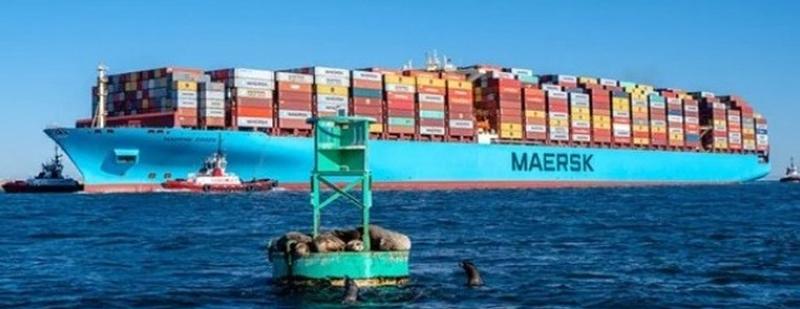 In what is developing into a record winter for containers lost over the side, the
In what is developing into a record winter for containers lost over the side, the 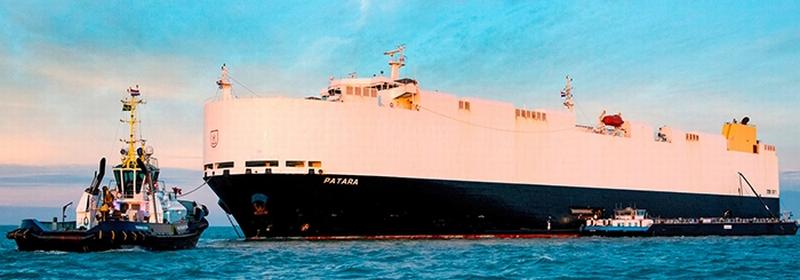
 At about 6 PM on Sunday, the
At about 6 PM on Sunday, the 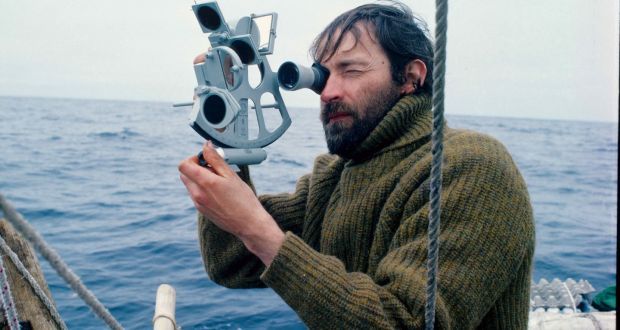
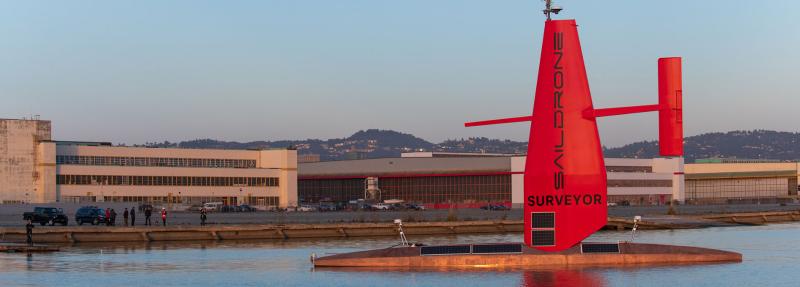
 An updated repost, a look back at the twin miracles on the Hudson from twelve years ago today. On January 15, 2009,
An updated repost, a look back at the twin miracles on the Hudson from twelve years ago today. On January 15, 2009,  Of all the strangeness that has already transpired in 2021, the most pleasant and least expected has been the explosion of sea shanties on
Of all the strangeness that has already transpired in 2021, the most pleasant and least expected has been the explosion of sea shanties on 
 Depending on which news report you listen to, the aircraft carrier
Depending on which news report you listen to, the aircraft carrier  A video clip for a Monday. During a practice match against British challenger INEOS Team UK, Peter Burling, Team New Zealand skipper, lost control of the AC75 Te Rehutai during a gybe. While sailing at about 35 knots, the boat took a nose-dive and rolled on its beam ends. Remarkably, there were no reported injuries or significant damage to the boat.
A video clip for a Monday. During a practice match against British challenger INEOS Team UK, Peter Burling, Team New Zealand skipper, lost control of the AC75 Te Rehutai during a gybe. While sailing at about 35 knots, the boat took a nose-dive and rolled on its beam ends. Remarkably, there were no reported injuries or significant damage to the boat. Sometimes size matters. We have recently seen ever-larger container ships delivered from Asian shipyards. This year, the
Sometimes size matters. We have recently seen ever-larger container ships delivered from Asian shipyards. This year, the  Last October, the Puget Sound Naval Shipyard completed
Last October, the Puget Sound Naval Shipyard completed 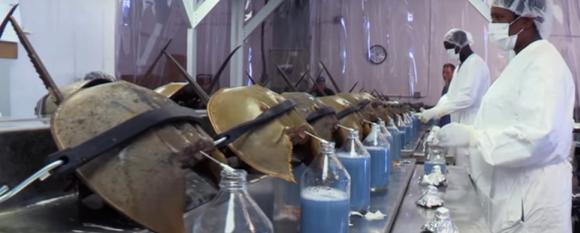 As the race is on to distribute Covid-19 vaccines around the globe, horseshoe crabs, or more specifically, horseshoe crab blood, is playing a major role in ensuring that the vaccines are safe to be injected into peoples’ arms. In fact, horseshoe crab blood plays an important role in the safety of all vaccines, but the surge in demand for Covid-19 vaccines is raising new concerns about potential overharvesting. Here is a repost updated for the pandemic from about a year and a half ago.
As the race is on to distribute Covid-19 vaccines around the globe, horseshoe crabs, or more specifically, horseshoe crab blood, is playing a major role in ensuring that the vaccines are safe to be injected into peoples’ arms. In fact, horseshoe crab blood plays an important role in the safety of all vaccines, but the surge in demand for Covid-19 vaccines is raising new concerns about potential overharvesting. Here is a repost updated for the pandemic from about a year and a half ago. The salvage of the stranded car carrier
The salvage of the stranded car carrier 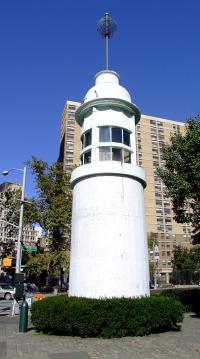 Thanks to Captain Richard Bailey for mentioning the time ball on the
Thanks to Captain Richard Bailey for mentioning the time ball on the  In recognition of his accomplishments and service,
In recognition of his accomplishments and service,  A video for a Sunday afternoon. In March, the US Navy officially commenced Ice Exercise (ICEX) 2020 in the Arctic Ocean with the construction of a temporary ice camp, Camp Seadragon, and the arrival of two US Navy fast-attack submarines.
A video for a Sunday afternoon. In March, the US Navy officially commenced Ice Exercise (ICEX) 2020 in the Arctic Ocean with the construction of a temporary ice camp, Camp Seadragon, and the arrival of two US Navy fast-attack submarines.